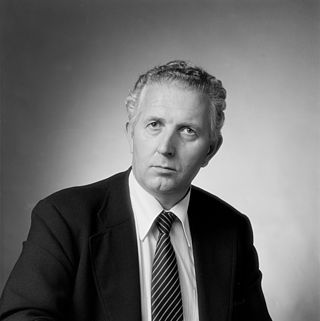Related Research Articles

Aftenposten is Norway's largest printed newspaper by circulation. It is based in Oslo. It sold 211,769 copies in 2015 and estimated 1.2 million readers. It converted from broadsheet to compact format in March 2005. Aftenposten's online edition is at Aftenposten.no. It is considered a newspaper of record for Norway.

Dagbladet is one of Norway's largest newspapers and is published in the tabloid format. It has 1,400,000 daily readers on mobile, web and paper. Traditionally Dagbladet is considered the main liberal newspaper of Norway, with a generally liberal progressive editorial outlook, to some extent associated with the movement of cultural radicalism in Scandinavian history.
Dagsavisen is a daily newspaper published in Oslo, Norway. The former party organ of the Norwegian Labour Party, the ties loosened over time from 1975 to 1999. It has borne several names, and was called Arbeiderbladet from 1923 to 1997. Eirik Hoff Lysholm is editor-in-chief. The newspaper depends on economic support from the Norwegian Government.

Morgenbladet is a Norwegian weekly, newspaper, covering politics, culture and science.
Hjemmet, pronounced "yemmeh" is a Norwegian weekly family magazine published in Oslo, Norway.
Mann was a Norwegian monthly men's magazine published in Oslo, Norway. The magazine was in circulation in the period 1996–2016.
Karl Petter "Kalle" Løken is a Norwegian businessman and former footballer. He became the CEO of Kværner ASA in May 2018.
Nettavisen is a Norwegian online newspaper, launched in 1996 as the first online-only newspaper in Norway. The current editor is Gunnar Stavrum. As of 2015 it was one of Norway's most popular news websites.

Andreas Norland was a Norwegian newspaper editor. He was known as editor of three large newspapers Adresseavisen, Verdens Gang and Aftenposten, and also held other positions in the Schibsted media conglomerate.
Anne Christine "Kiki" Sørum was a Norwegian fashion journalist, editor, and author. She worked as a fashion editor for the weekly magazine Hjemmet from 1973 to 1977 and general editor of the magazine Nicole from 1979 to 1981. She also worked as a freelancer for several publications, among these Verdens Gang, Se og Hør and Dagbladet.

Karl Christen Johanssen was a Norwegian lawyer and journalist.
Document.no is a Norwegian far-right anti-immigration website. Academics have identified Document.no as an Islamophobic website permeated by the Eurabia conspiracy theory. The website received global media attention in connection with the 2011 Norway attacks due to its association with perpetrator Anders Behring Breivik, a former comment section poster on the website.
Adolf Skjegstad, who usually called himself A. Skjegstad was a Norwegian journalist.

Per Edgar Kokkvold is a Norwegian journalist, former editor and secretary-general of the Norwegian Press Association, and current chair of the Norwegian Broadcasting Council.

Rasmus Johan Michael Hansson is a Norwegian biologist, civil servant, environmental activist and a former national spokesperson for the Green Party. He led the Norwegian chapter of World Wide Fund for Nature from 2000 to 2012. In 2013, he was elected to the Parliament of Norway as the first representative for the Green Party.

Kjersti Løken Stavrum is a Norwegian journalist and editor. Since April 2013, she has been Secretary General of the Norwegian Press Association.
Byavisa was a free newspaper published in Trondheim, Norway from 1996 to 2016. It was distributed to all households in Trondheim as well as the central part of the municipality of Melhus. The paper was issued every Wednesday. The newspaper was discontinued due to a long-term operating deficit. The last issue was released on May 25, 2016.
Avis 1 was a free newspaper published in Oslo, Norway from 1998 to 2005.
Per A. Borglund is a Norwegian newspaper and magazine editor.
As the capital of Norway, Oslo holds the headquarters of most national newspapers in Norway. On the other hand, there have been discussions on the lack of local newspapers covering the communities and day-to-day affairs of the boroughs of Oslo. At various times, there have been efforts to prop up local newspapers. The 1920s saw a wave of establishments which restricted themselves to covering specific outer boroughs of the former Aker municipality. The early 21st century saw several new borough-specific newspapers emerge, alongside some publications seeking to cover the politics of the city as a whole.
References
- ↑ "A-magasinet". Aftenposten Kundeportal. Retrieved January 13, 2018.
- ↑ "Oppgave 2 – Formidling (Del 2)". Digital Mediedesign. October 14, 2016. Retrieved January 13, 2018.
- ↑ Fossbakken, Erlend (December 2, 2010). "Blir ny trykkerisjef i Hjemmet Mortensen". Kampanje. Retrieved January 13, 2018.
- ↑ Ravn, Linn Karen (May 21, 2014). "Det er veldig trist". Dagens Næringsliv. Retrieved January 13, 2018.
- ↑ Ylvisåker, Line Nagell (2009). A-magasinet i tre epokar. Ein komparativ analyse av Aftenposten sitt helgebilag i 1927, 1963 og 2005 (PDF). Oslo: Institutt for medier og kommunikasjon. p. 9. Retrieved January 14, 2018.
- 1 2 "A-magasinet". Morgenbladet. October 21, 2005. Retrieved January 14, 2018.
- 1 2 3 Pettersen, Øyvind Breivik. "Aftenposten". Store norske leksikon. Retrieved January 15, 2018.
- ↑ Jensen, Martin Huseby (October 22, 2010). "Klok femåring". Journalisten. Retrieved January 15, 2018.
- ↑ "Lillian Vambheim (41)". Journalisten. November 27, 2012. Retrieved January 15, 2018.